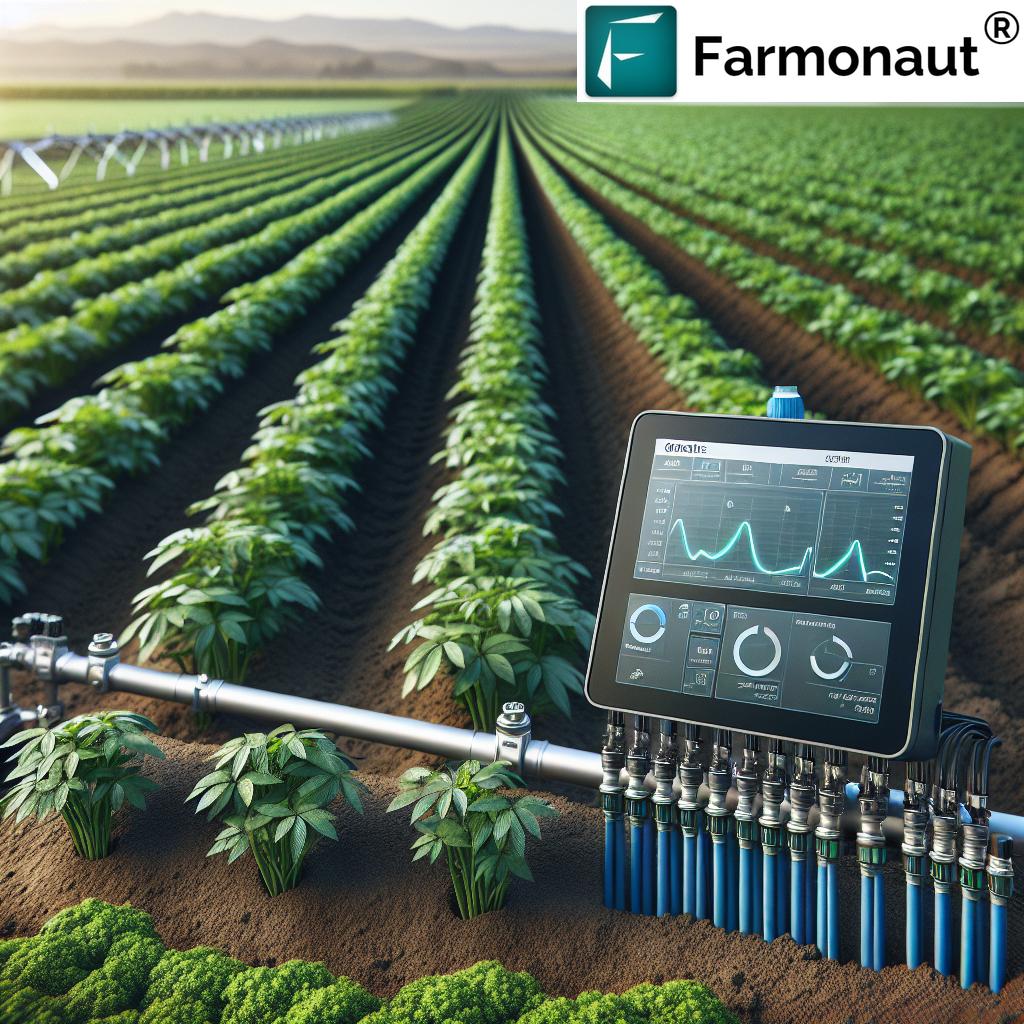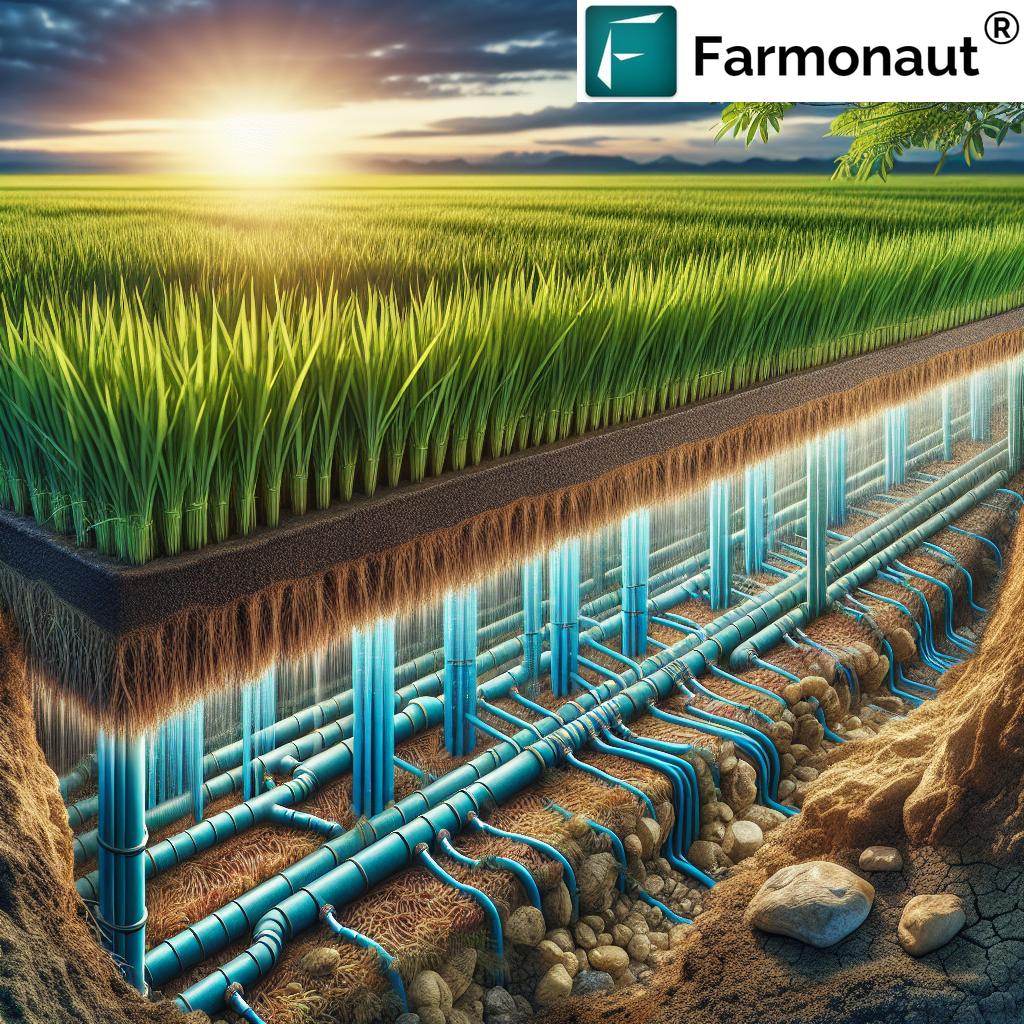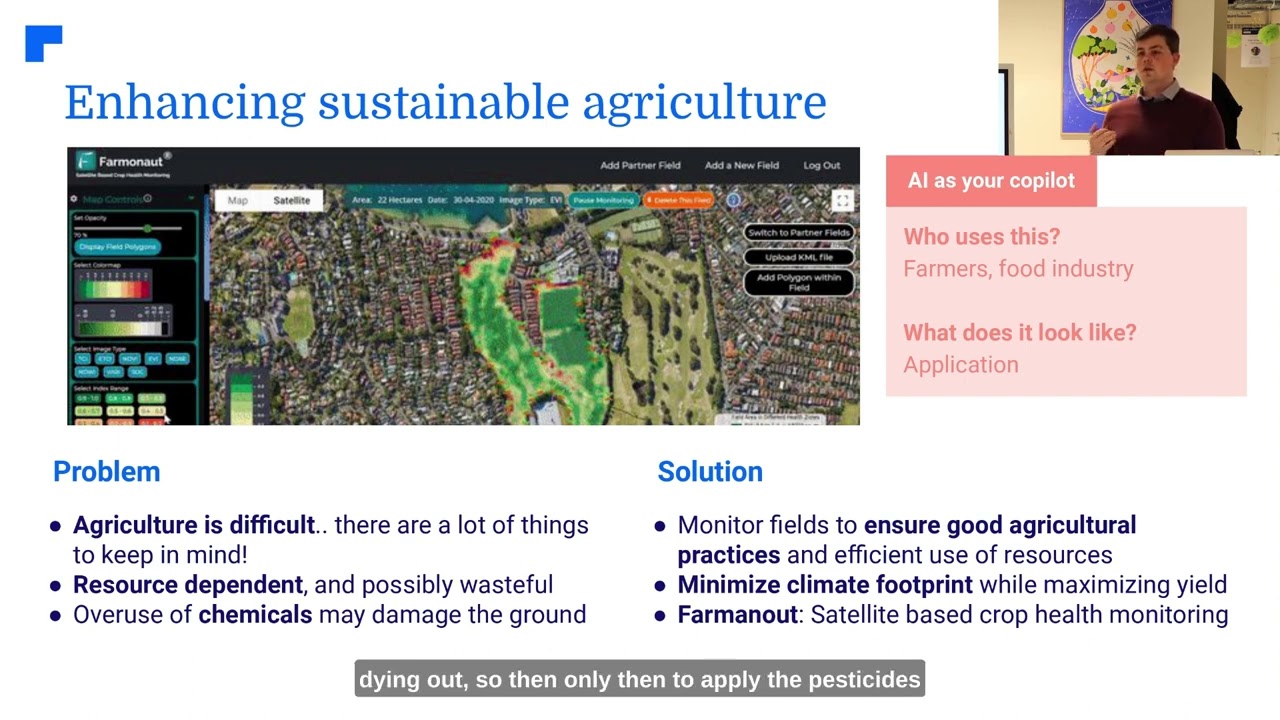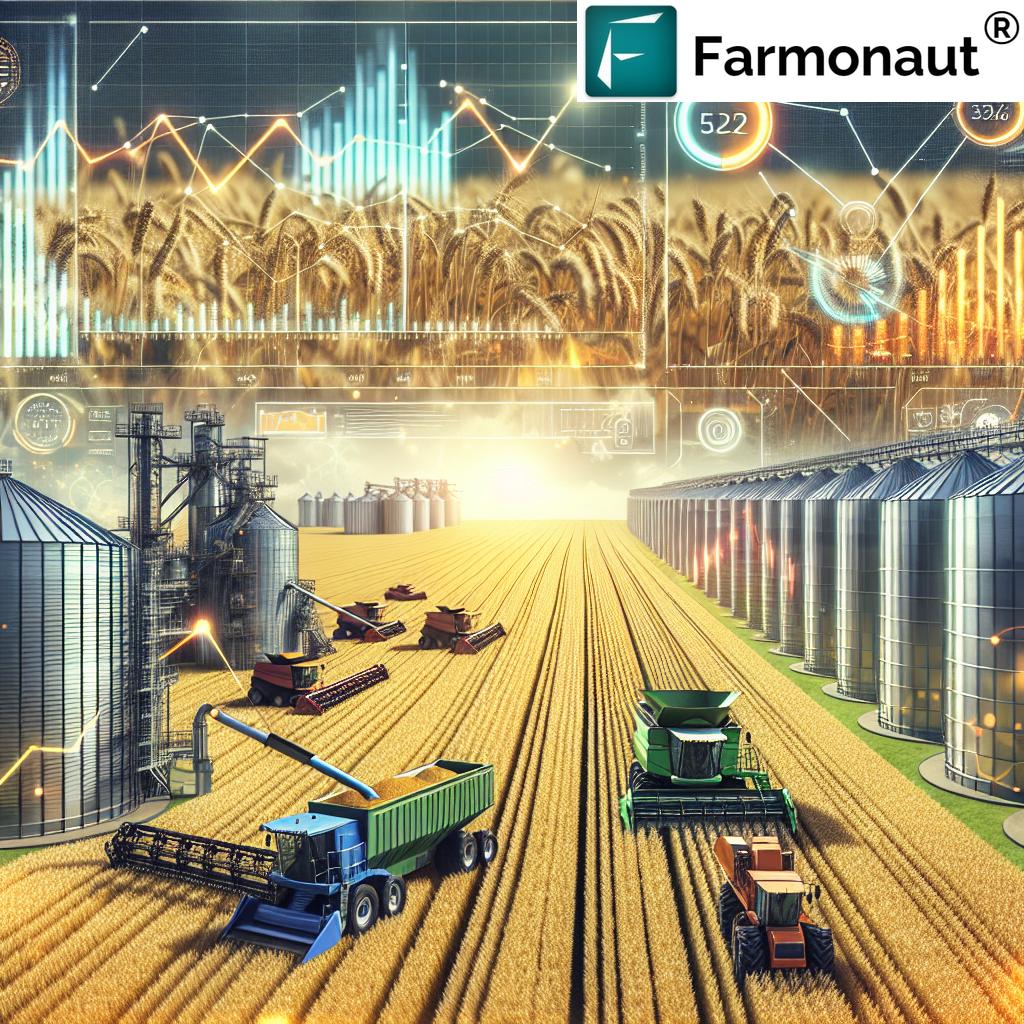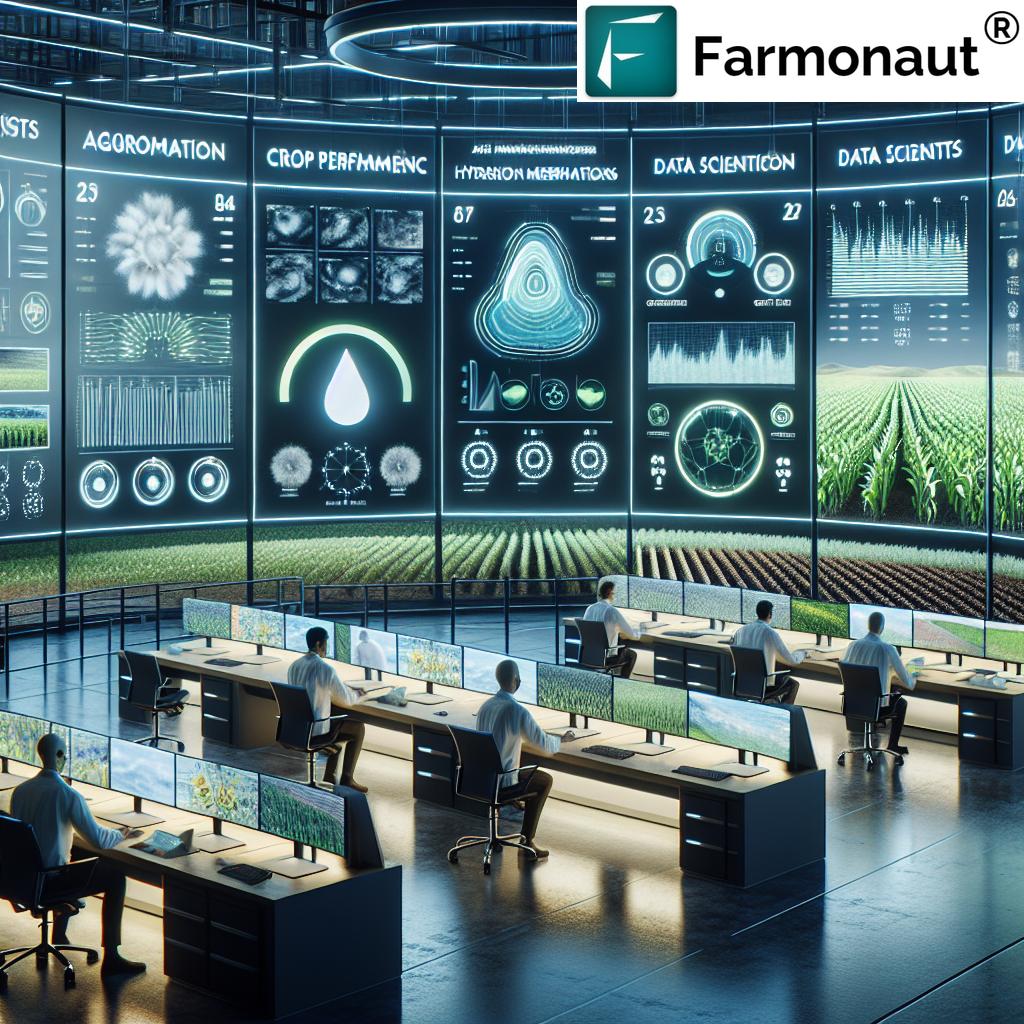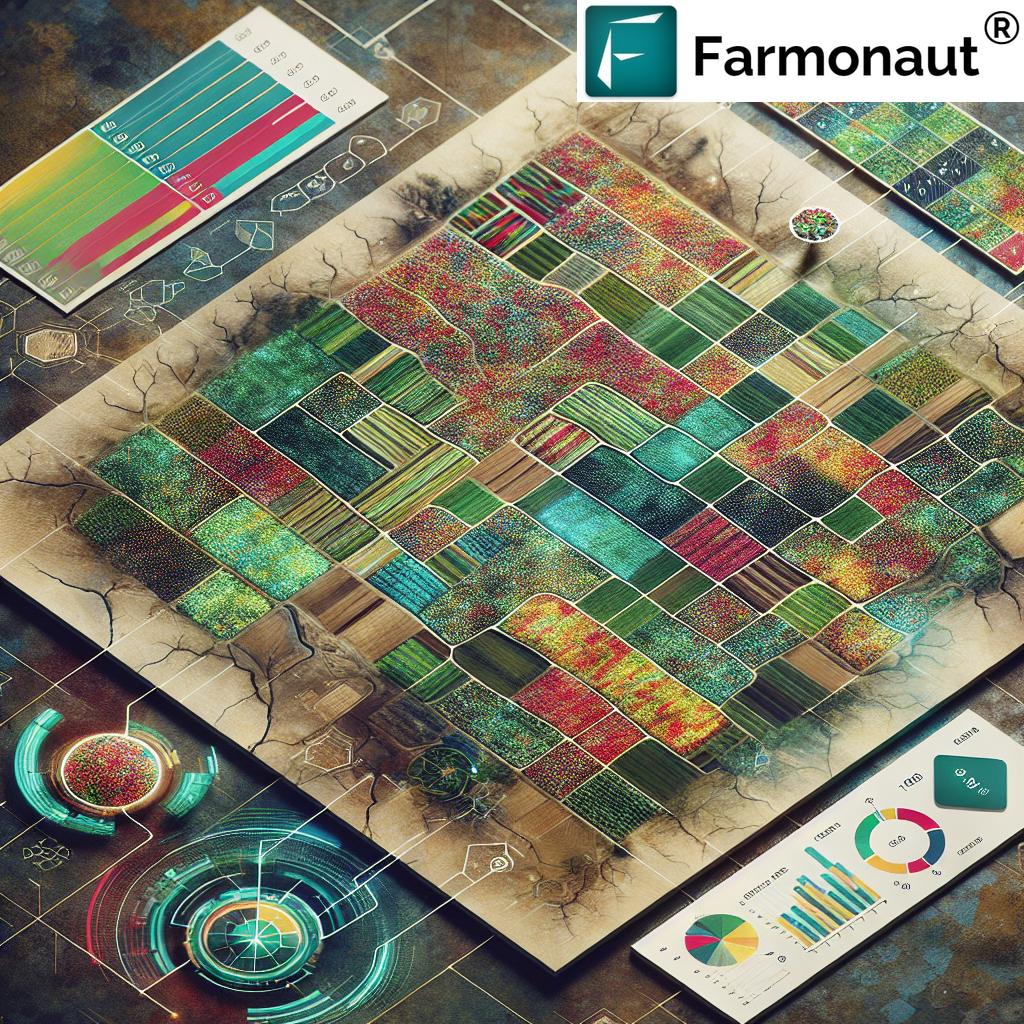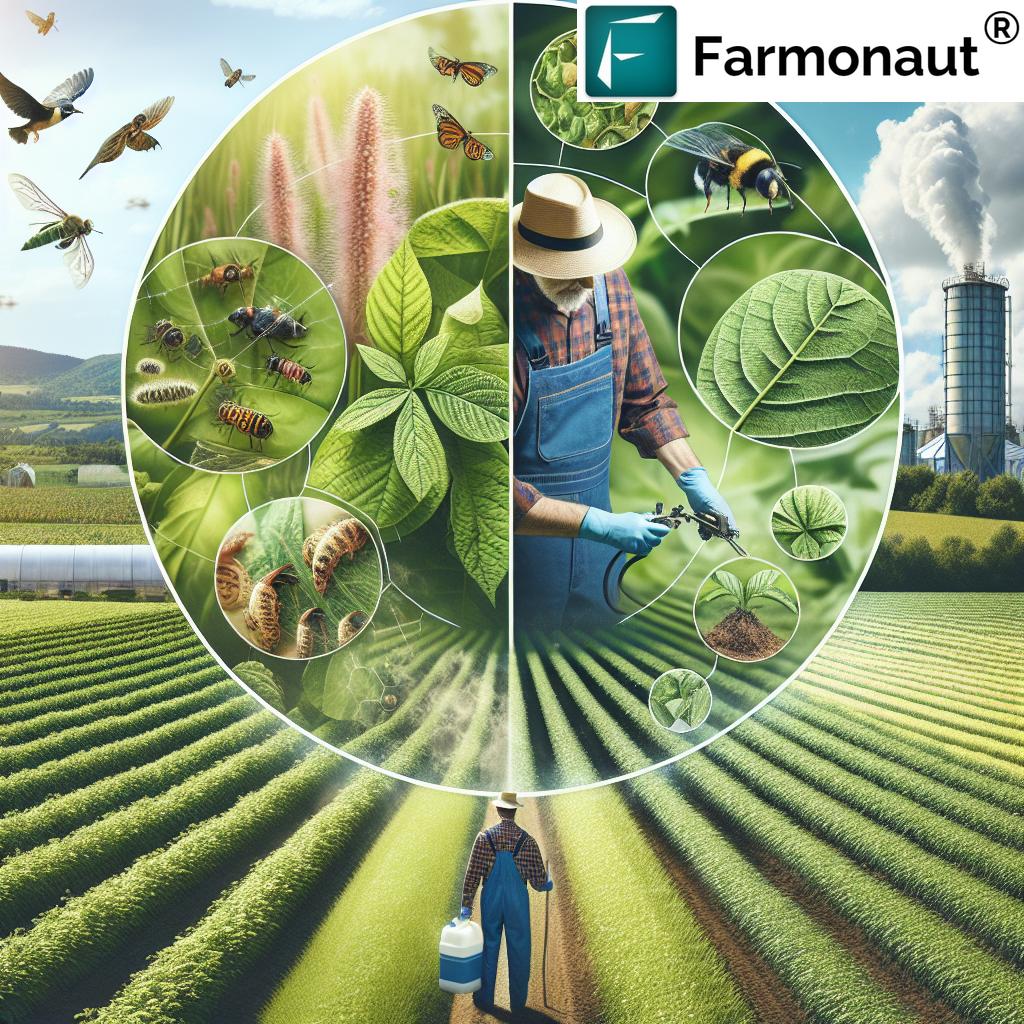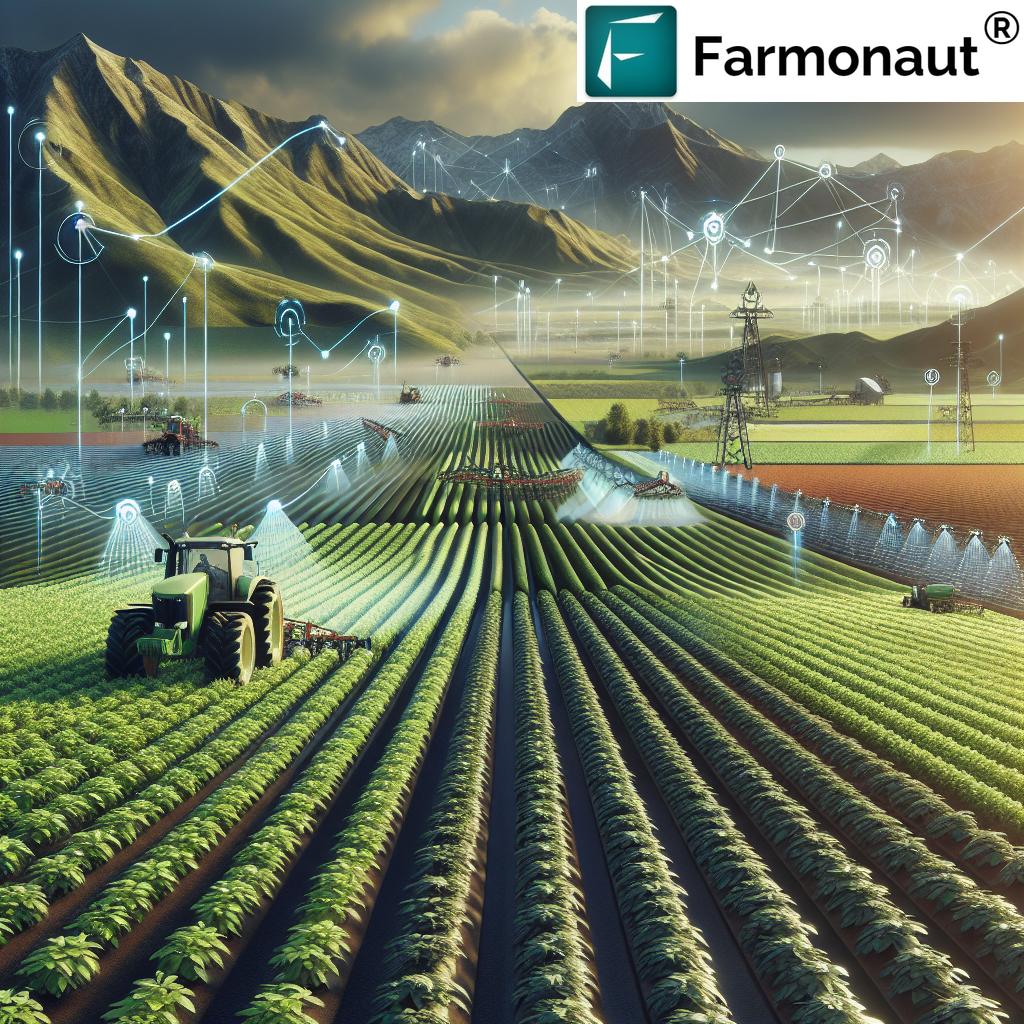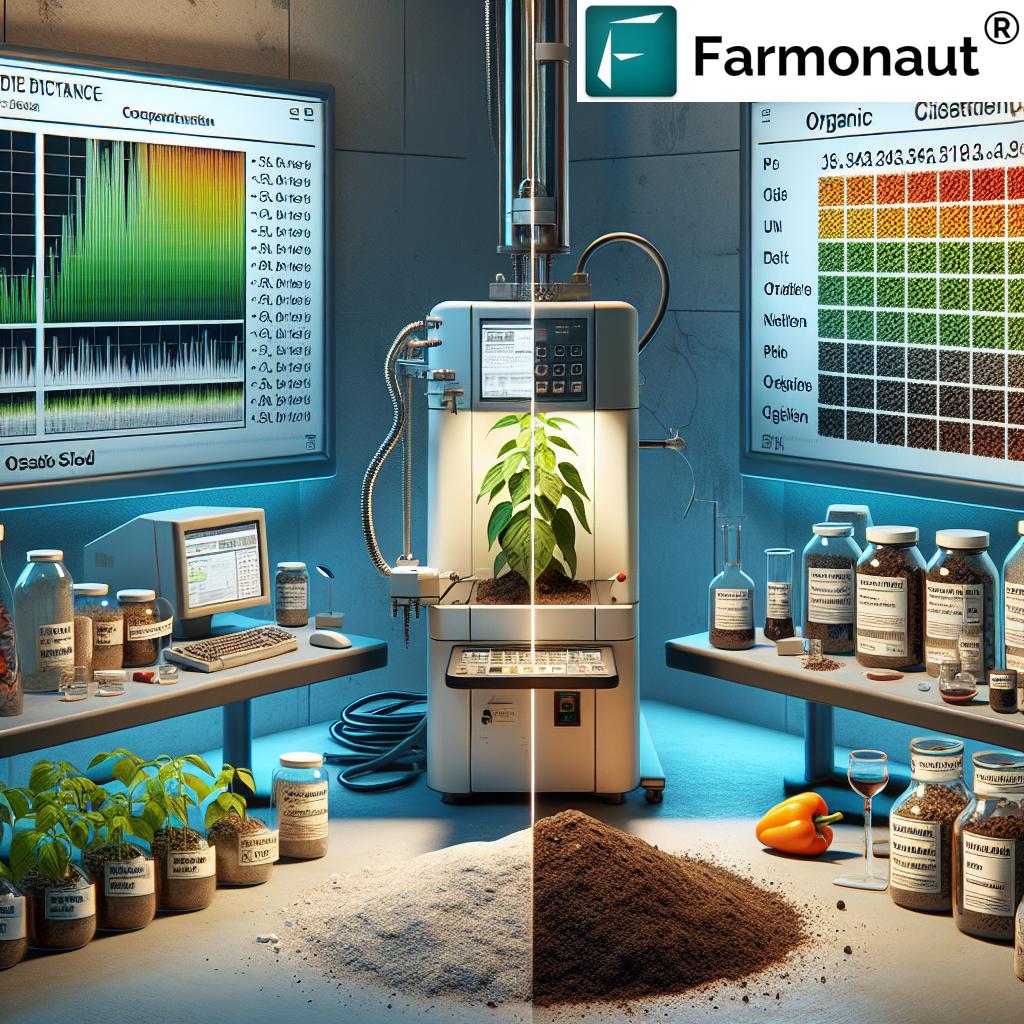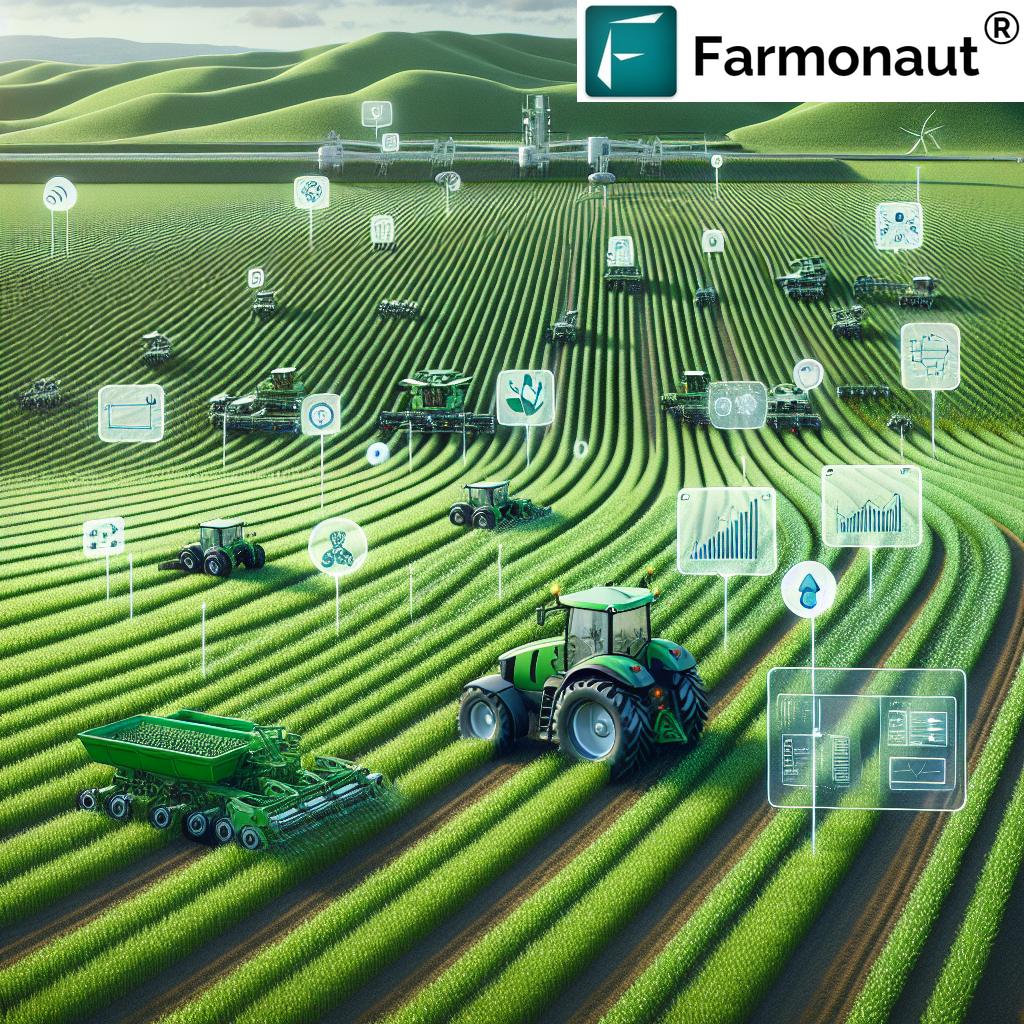Technology to Maintain Optimal Soil Moisture: Top 7 Ways
Maintaining optimal soil moisture is fundamental for healthy crops, sustainable water use, and maximizing yields in agricultural and forestry systems. Leveraging cutting-edge advancements from soil moisture sensors to remote sensing and automated irrigation, we can revolutionize how we manage soil water levels—enabling precision agriculture and smarter farm management practices.
“Advanced soil moisture sensors can reduce irrigation water use by up to 30% in precision agriculture.”
- Summary: Importance of Maintaining Optimal Soil Moisture
- Trivia: Efficiency Boosts with Technology
- Top 7 Ways to Maintain Optimal Soil Moisture
- Emerging Advancements (Bonus: More than Seven!)
- Comparative Table: Soil Moisture Technologies at a Glance
- Farmonaut’s Advanced Technology for Soil Moisture Management
- Get Started: Farmonaut App, API, and Subscription
- Frequently Asked Questions (FAQs)
- Conclusion
Summary: Importance of Maintaining Optimal Soil Moisture
For every farmer and forester, maintaining optimal soil moisture is crucial for the health and productivity of crops and forest plantations. Thanks to rapid advancements in technology, we now have a toolkit of innovative methods to monitor, manage, and enhance soil moisture levels. These approaches lead to more efficient water use, improved crop yields, and support for sustainable agricultural and forestry practices.
Below, we’ll explore the top seven technological ways to keep soil moisture at its optimal level, plus bonus advancements to further future-proof your farming and resource management strategy.
“Automated irrigation systems increase crop yields by as much as 20% through optimal soil moisture management.”
Top 7 Ways to Maintain Optimal Soil Moisture
Let’s dive into the core technologies that are reshaping water management, improving crop health, and delivering sustainable growth in agriculture and forestry.
1. Soil Moisture Sensors: The Foundation of Precision Irrigation
The heart of soil moisture monitoring lies in soil moisture sensors. These devices provide real-time data on the volumetric water content in the soil, enabling us to monitor and maintain optimal soil moisture levels with remarkable accuracy. With these insights, farmers and foresters can tailor their irrigation practices, ensuring plants receive adequate hydration without waste.
- Measurement Types: Capacitance, time-domain reflectometry (TDR), and frequency-domain reflectometry (FDR) technologies offer distinct advantages in accuracy, cost, and installation requirements.
- Practical Use: Sensors are installed at various soil depths, continuously measuring moisture, and relaying data back to farm management systems for instant analysis.
- Benefits: This approach enables precise scheduling of irrigation, reduces resource waste, and prevents overwatering or underwatering.
Soil moisture sensors are central to precision agriculture and efficient soil water management.
By integrating Farmonaut’s platform with field-based soil moisture sensors, you get comprehensive soil and crop health data, even in remote or large-scale operations.
2. Remote Sensing Technologies for Agriculture: A Wide-Angle View
Remote sensing technologies have transformed large-scale farm management by using satellite and drone imagery to assess soil moisture across extensive fields. These advanced methods enable us to detect spatial variability, allocate resources efficiently, and quickly identify regions that require attention.
- Data Types: By analyzing vegetation indices (like NDVI), thermal infrared imagery, and other remote data, we can detect stress signs from moisture scarcity before visual symptoms appear.
- Impact: Helps monitor effectiveness of irrigation, track weather-related changes in soil water content, and refine management practices.
- Scalability: Farmonaut’s satellite-based crop health monitoring brings these capabilities to farmers of all scales, providing actionable insights via web, iOS, and Android apps.
Remote sensing is especially powerful for large agricultural fields and forestry operations, where manual monitoring would be laborious and less accurate.
3. Automated Irrigation Systems: Smart Water Management
Automated irrigation systems dramatically enhance water use efficiency by integrating sensor data with smart irrigation controls. These systems deliver water precisely where and when it’s most needed.
- How It Works: The system triggers irrigation based on soil moisture readings, predefined thresholds, and weather forecast integrations.
- Benefit: By considering forecasted rainfall and temperature changes, the system avoids overwatering—matching actual plant requirements.
- Outcome: This dynamic scheduling conserves water, reduces labor, and supports sustainable irrigation practices.
Modern platforms such as Farmonaut’s Android app (also available on iOS) connect real-time field data with automated workflows, empowering users to make informed and timely irrigation decisions.
4. Subsurface Drip Irrigation (SDI): Direct-to-Root Hydration
Subsurface drip irrigation (SDI) is an efficient irrigation technology where drip lines are placed below the soil surface. This delivers water directly to the root zone—the area where plants need it most.
- Reduces Evaporation: By distributing water below ground, SDI minimizes water lost to evaporation or surface runoff.
- Customizable: Systems can be designed for various soil types and crop requirements, maintaining uniform soil moisture and increasing yield potential.
- Example: In arid regions, SDI is a crucial approach for water conservation in farming and maximizing output per liter of water.
Data-driven soil moisture monitoring platforms like Farmonaut’s analytics support SDI by guiding system operation schedules and optimal irrigation volumes.
5. Alternate Wetting and Drying (AWD): Innovative Irrigation for Rice
AWD is a proven irrigation strategy commonly applied in rice fields, involving cycles of flooding and drying. This innovative technique offers several agronomic and environmental benefits.
- Reduced Water Use: Allowing the soil to dry before re-flooding reduces total water requirements for rice cultivation.
- Yield & Sustainability: AWD can enhance nutrient uptake and improve yields, while also reducing methane emissions—a win for the environment.
- Management: Requires careful soil moisture monitoring to avoid plant stress and prevent unwanted side effects such as increased nitrous oxide emission or weed growth.
Farmonaut’s AI-based advisory systems can help rice growers detect AWD phases using satellite and remote sensing data, making real-time recommendations for timely irrigation actions.
6. Soil Moisture Retention Materials: Extending Hydration with Innovative Materials
Integrating soil moisture retention materials—including hydrogels, organic mulches, and biochar—significantly boosts water-holding capacity and supports plant health during drought or high-evaporation periods.
- How It Works: These materials absorb water during irrigation or rainfall and release it gradually to the rhizosphere as the soil dries, ensuring consistent moisture levels for crops.
- Benefits: Extend the period between irrigations, reduce total water use, promote conservation, and improve soil structure.
- Sustainability: Support beneficial microbial activity and boost soil health—an important factor for long-term productivity in sustainable agriculture.
These materials are particularly useful in regions experiencing increasing weather variability and unpredictable rainfall patterns. Farmonaut recommends incorporating retention agents into soil management plans, especially for those confronting frequent dry spells.
7. Artificial Intelligence in Agriculture: Predictive Power for Moisture Management
The marriage of artificial intelligence (AI) and machine learning with big data analytics has marked a new era of efficiency in soil moisture management.
- Data-Driven Decisions: AI models analyze historical sensor readings, weather forecasts, and crop performance metrics, giving us the ability to predict and optimize irrigation schedules proactively.
- Applications: Automates complex decision-making, such as anticipating future soil moisture levels and warning of potential water stress well before it impacts yield.
- Integration: On platforms like Farmonaut’s Jeevn AI advisory system, advanced analytics deliver real-time and predictive insights, supporting informed farm management decisions.
Explore how Farmonaut’s AI technology is shaping the future of soil moisture monitoring and efficient farming.
Emerging Advancements: Beyond the Top Seven Methods
The world of soil moisture management doesn’t stop at seven core approaches. Let’s highlight additional innovative technologies and practices that further enhance field performance, boost water conservation, and safeguard crop health.
Climate-Resilient Crop Varieties: Building Moisture Tolerance
Biotechnology empowers us to integrate climate-resilient crop varieties in our systems. These advanced crops are bred or engineered to withstand variable soil moisture conditions and water-limited environments.
- Benefit: Lower dependency on frequent irrigation and increased yield stability in changing weather patterns.
- Advancement: Drought-tolerant gene variants and modern breeding methods are enabling more resilient, high-output fields.
By planting such crop varieties, we can improve productivity and reduce the burden on water resources—key elements of sustainable agriculture.
Precision Agriculture: Analytics-Driven Field Management
Precision agriculture utilizes GPS, IoT, and analytics to bring site-specific management of soil, moisture, and crop inputs. This approach gives us a competitive edge in resource optimization and increased productivity.
- How It Works: Combines real-time and historical data on soil moisture, nutrients, pest pressure, and field environment to guide interventions.
- Advantages: Reduces waste, improves yields, and minimizes environmental impact by ensuring each field zone gets exactly the inputs it needs.
- Farmonaut’s Contribution: With carbon footprinting, blockchain-based traceability, and AI-driven monitoring, Farmonaut’s ecosystem delivers actionable recommendations for improved efficiency and compliance.
Soil Moisture Forecasting Models: Looking Ahead with Confidence
Soil moisture forecasting models use weather data, soil properties, and historical analytics to estimate future moisture availability.
- Uses: Develop proactive irrigation schedules, minimize crop stress during heatwaves or dry spells, and guide risk management in farming.
- Integration: By feeding models with farm- or region-specific data, weather forecasts, and real-time readings from sensors or satellites, we develop a comprehensive field management plan.
- Farmonaut’s APIs: Access up-to-date satellite-based soil moisture data and API developer docs to build, automate, or extend your own soil moisture forecasting models.
Comparative Table: Soil Moisture Technologies at a Glance
Examine the table below for a snapshot comparison of each leading technology’s process, potential water savings, estimated yield improvements, and unique advantages. Use these insights to imagine a more efficient, data-driven approach for your own field.
| Technology | How It Works | Estimated Water Savings (%) | Estimated Yield Improvement (%) | Key Advantages |
|---|---|---|---|---|
| Soil Moisture Sensors | Sensors in field measure volumetric water content in real time | 20-30% | 10-20% | Highly accurate, enables precise scheduling, reduces water waste |
| Remote Sensing Technologies | Satellite/drone imagery detects soil, crop moisture variability | 15-25% | 10-20% | Wide coverage, identifies problem areas rapidly |
| Automated Irrigation Systems | Automated controls based on sensor data & weather forecasts | 25-40% | 15-25% | Labor saving, water conservation, optimal hydration |
| Subsurface Drip Irrigation | Drip lines deliver water under the soil surface to roots | 30-50% | 15-30% | Minimizes evaporation & runoff; high efficiency |
| Alternate Wetting and Drying | Controlled cycles of flooding and drying (esp. rice) | 15-30% | 10-15% | Reduces methane emission, improves nutrient uptake |
| Soil Moisture Retention Materials | Hydrogels/mulches retain & slowly release moisture | 10-25% | 5-15% | Mitigates drought, improves soil health |
| Artificial Intelligence & Machine Learning | AI/ML predict optimal irrigation using historical & real-time data | 20-40% | 15-25% | Predictive, proactive, scalable across fields |
Farmonaut’s Advanced Technology for Soil Moisture Management
At Farmonaut, our mission is to make precision agriculture affordable and accessible to farmers, agribusinesses, government agencies, and corporate clients. We provide advanced, satellite-based farm management solutions that empower users to measure, monitor, and improve soil moisture levels directly from their mobile or desktop.
- Satellite-Based Crop Health Monitoring: Utilizing multispectral satellite imagery, we monitor vegetation indices, soil moisture, and other key indicators over large areas. This enables informed irrigation, fertilizer, and crop protection decisions. Read more about scaling up with our large-scale farm management tool.
- Jeevn AI Advisory System: Our proprietary AI tool generates real-time, personalized farm advisory suggestions, optimizing farm productivity and minimizing resource wastage.
- Blockchain for Traceability: To ensure transparency and trust through the supply chain, our blockchain-based product traceability solution records every stage of agricultural goods.
- Fleet and Resource Management: The fleet management module allows for real-time tracking and cost optimization for on-ground operations.
- Environmental Footprinting: Track, monitor, and reduce emissions with our carbon footprinting service.
- Financing and Claims: Our crop loan and insurance tools use satellite-based verification for reliable, faster access to financing.
- Developer & Partner API: Our public API allows seamless integration of satellite data and real-time analytics, with comprehensive developer documentation.
Get Started with Farmonaut: Apps, API, and Flexible Subscription Models
Our user-friendly Android, iOS, and web/browser apps deliver advanced soil moisture monitoring, AI advisory, and remote sensing for farmers and enterprises of all sizes.
Interested in integrating soil moisture data into your own analytics or ERP? Explore Farmonaut’s API and check out the developer docs for complete details.
Frequently Asked Questions (FAQs) – Technology to Maintain Optimal Soil Moisture
What is the most accurate method for soil moisture monitoring?
Using a combination of soil moisture sensors—especially time-domain reflectometry (TDR) and frequency-domain reflectometry (FDR)—provides the most accurate, real-time measurements at various root depths. Combining this with remote sensing technologies further improves field-wide monitoring.
How do automated irrigation systems improve water efficiency?
Automated irrigation systems use real-time soil sensor data and weather forecasts to deliver precise water amounts exactly when and where needed, avoiding waste. This supports consistent plant hydration and can reduce total water use by up to 40%.
How does remote sensing help farmers and foresters?
Remote sensing provides field-scale, high-frequency data on soil moisture, crop health, and field variability, allowing users to identify problem areas and adjust irrigation or fertilizer accordingly for optimal productivity.
Can these technologies help me save on labor and costs?
Absolutely. By automating both monitoring and irrigation scheduling, labor demands are greatly reduced, while lower water and fertilizer usage cuts costs and increases yields.
Is Farmonaut’s solution suitable for small farmers?
Yes! Farmonaut is designed for affordability and ease-of-use, supporting individual smallholder farmers as well as large agribusinesses with scalable, module-based subscription plans.
How do soil moisture retention materials fit into modern agriculture?
Integrating hydrogels or mulches increases the soil’s ability to retain water, reducing irrigation frequency and improving young plant survival in hot or arid conditions.
How do I get started with Farmonaut for soil moisture monitoring?
Download the Farmonaut Android app, iOS app, or use our Web App to start tracking and optimizing soil moisture and crop performance in real time!
How do Farmonaut’s APIs support precision agriculture platforms?
With our API, developers and businesses can integrate satellite-based soil and crop moisture data into their own applications, ERP, or management systems for full automation and analytics.
Conclusion: Embracing Technology for Optimal Soil Moisture Management
By embracing these advanced technologies—from soil moisture sensors and remote sensing to AI-driven analytics and precision agriculture—we ensure smarter water use, higher yields, and greater resilience for our crops and forests. As innovations continue to emerge, it’s vital that we integrate data-driven practices into our daily farming operations to drive sustainable productivity and environmental stewardship.
At Farmonaut, we’re proud to empower our users worldwide with accessible, scalable farm management solutions—setting new standards for efficiency, resource conservation, and crop health. Stay ahead of the curve with the latest in soil moisture monitoring and precision agriculture.
Ready to take your farm or forestry operation to the next level? Start by monitoring, managing, and optimizing your soil moisture with Farmonaut’s suite of technologies and analytics.


